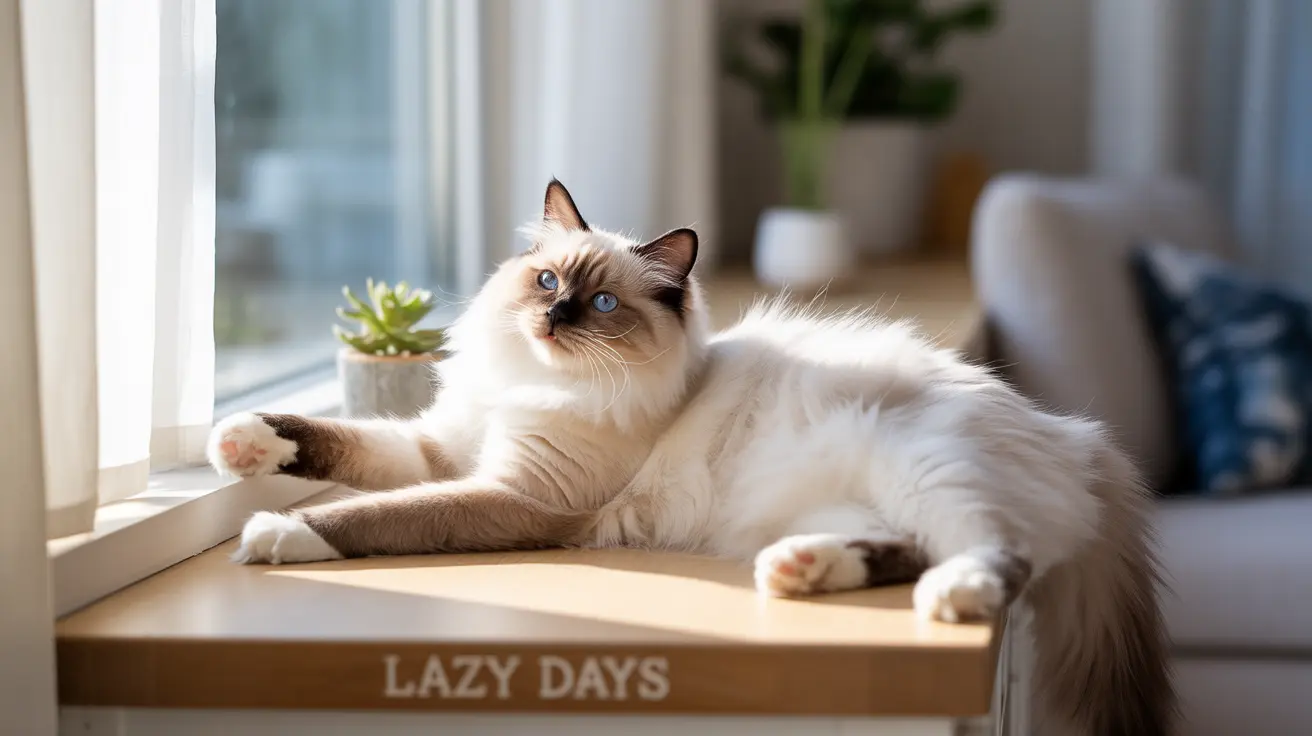When you see your cat stretching gracefully after a long nap, you're witnessing more than just a casual movement - it's a complex behavior deeply rooted in their physiology and instincts. From maintaining muscle health to communicating comfort, cat stretching serves multiple vital purposes in feline well-being.
In this comprehensive guide, we'll explore the fascinating world of cat stretching, including its physical benefits, behavioral significance, and what these stretches tell us about our feline friends' health and happiness.
The Physical Benefits of Cat Stretching
Cats are natural athletes, and their stretching routine plays a crucial role in maintaining their renowned agility and flexibility. Each stretch serves multiple purposes for your feline's physical health:
Regular stretching helps cats maintain muscle flexibility and prevents stiffness, particularly important since they spend 12-16 hours sleeping daily. These movements increase blood flow to their muscles, delivering essential nutrients and removing waste products that accumulate during periods of inactivity.
Additionally, stretching helps lubricate joints and maintain a healthy range of motion, preparing cats for sudden bursts of activity like running or pouncing - skills that remain important even for indoor cats.
Different Types of Cat Stretches
The Full-Body Extension
This classic stretch involves your cat extending their front legs forward while arching their back and pushing out their back legs. It's typically performed after waking up and helps realign the spine while stimulating circulation throughout the body.
The Vertical Stretch
When your cat stretches upward against a scratching post or wall, they're not just exercising - they're also marking their territory through scent glands in their paws. This behavior serves both physical and territorial purposes.
The Trust Roll
When cats stretch while lying on their backs, exposing their bellies, they're demonstrating complete comfort and trust in their environment. This position allows for a deep stretch of the spine and abdominal muscles.
Communication Through Stretching
Cat stretching isn't just about physical maintenance - it's also a form of communication. When cats stretch in your presence, they're often signaling:
- Comfort and security in their environment
- A friendly greeting to family members
- Social contentment in multi-cat households
- Trust and relaxation
Signs of Potential Health Issues
While stretching is normal and healthy, certain stretching behaviors may indicate health concerns:
- Excessive or unusual stretching patterns
- Signs of pain or discomfort while stretching
- Sudden changes in stretching habits
- Reluctance to stretch altogether
If you notice any of these changes, it's important to consult with your veterinarian, as they could signal underlying health issues like arthritis or muscle strain.
Creating an Environment That Encourages Healthy Stretching
To support your cat's natural stretching behaviors, consider these environmental enhancements:
- Multiple scratching posts at various heights
- Open floor spaces for full-body stretches
- Comfortable perches near windows
- Cat trees with different levels
- Soft surfaces for belly-up stretches
Frequently Asked Questions
Why do cats stretch so often throughout the day?
Cats stretch frequently to maintain muscle flexibility, increase blood flow, and prepare their bodies for activity after periods of rest. This behavior is especially important given their long sleeping hours and need to remain ready for sudden movement.
How does stretching benefit my cat's muscles and joints?
Stretching helps lubricate joints, maintain flexibility, increase blood circulation, and prevent muscle stiffness. It also helps maintain proper range of motion and can reduce the risk of injury during physical activity.
What does it mean when my cat stretches and shows their belly?
When a cat stretches and exposes their belly, it's a sign of complete trust and comfort in their environment. This vulnerable position indicates they feel safe and secure in their surroundings.
How can I encourage my cat to stretch more safely at home?
Provide plenty of open space, scratching posts, cat trees, and comfortable surfaces for stretching. Engage in interactive play to naturally encourage stretching, and ensure your cat has various elevated surfaces to stretch against.
When should I worry if my cat is stretching too much or seems reluctant to stretch?
Consult a veterinarian if you notice excessive stretching, signs of pain while stretching, or a sudden reluctance to stretch. These could indicate underlying health issues such as arthritis, muscle strain, or other medical conditions requiring attention.
Understanding your cat's stretching behaviors helps you better monitor their health and well-being. By providing an environment that supports natural stretching and staying attentive to changes in their stretching patterns, you can help maintain your cat's physical health and emotional contentment.






